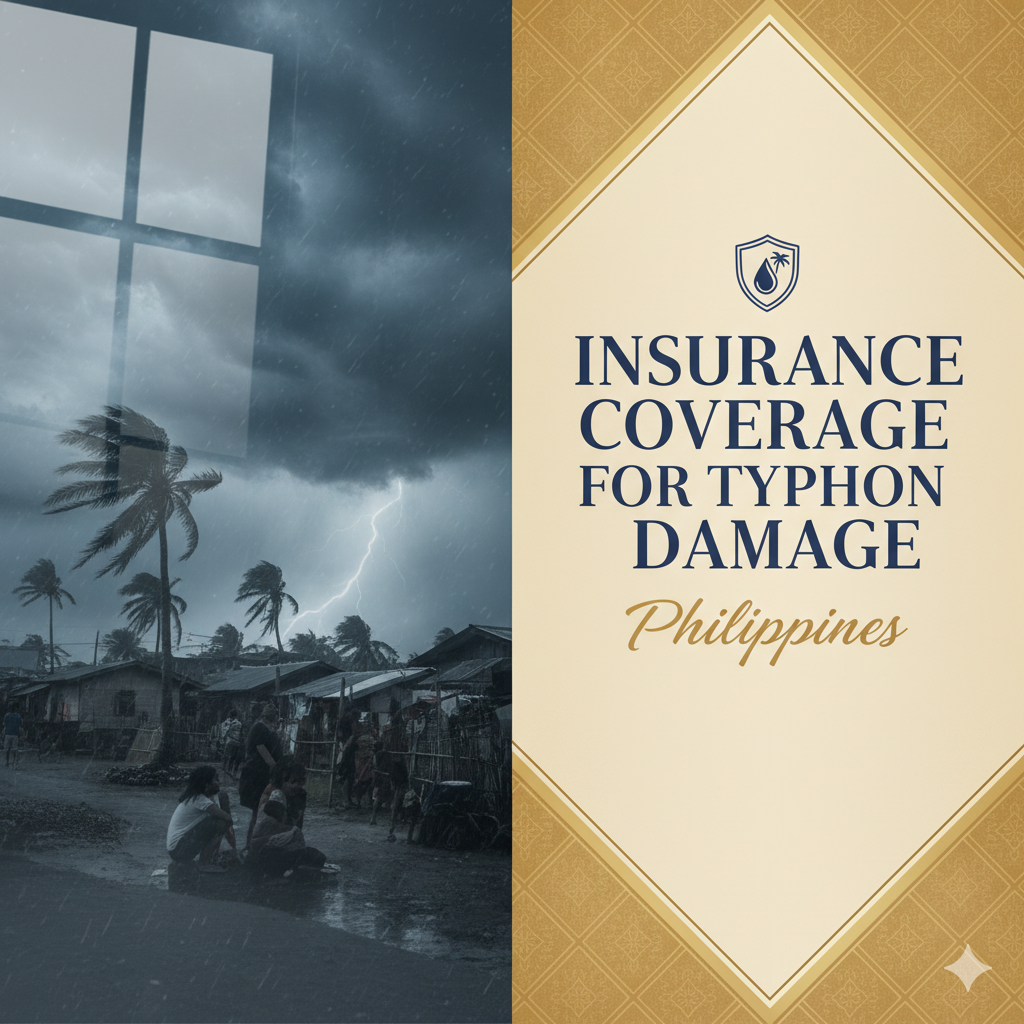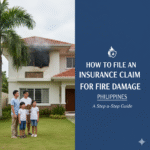Practical guide to typhoon insurance (Philippines)
Living in a typhoon-prone country means planning ahead — and that starts with understanding insurance coverage for typhoon damage Philippines. Knowing whether wind, rain, storm surge or flood are covered (and under what limits) can keep you from a financial shock after the next big storm.
This 1,000-word guide breaks down which policies usually cover typhoon losses, typical exclusions, how deductibles work, and step-by-step how to document and file claims for insurance coverage for typhoon damage Philippines.
Read the quick checklist, follow the practical claim tips, and use the FAQ to decide if you need extra endorsements or a separate flood/parametric policy — all to make your insurance coverage for typhoon damage Philippines actually work when a storm hits.
Quick answer (TL;DR)
Yes — you can buy protection, but it depends on the policy. Standard homeowners or “fire” policies sometimes include windstorm/typhoon or offer them as add-ons; flood is frequently separate. Car insurance will often cover storm damage only if you have a comprehensive policy with an Acts-of-Nature / Acts-of-God endorsement. The Insurance Commission regulates minimum covers and has issued guidance for typhoon/flood/earthquake programs in the Philippines. Philippine Insurance Commission+1
What types of policies can protect you
-
Homeowners / House & Contents: Many insurers sell “home security” or comprehensive packages that include fire and acts of nature (earthquake, typhoon, flood) as part of the extended cover or via endorsement. Read policy wording for “windstorm,” “typhoon,” and “flood.” axa.com.ph
-
Motor (Comprehensive): Comprehensive motor policies can include natural-calamity cover (sometimes called “Acts of Nature” or “Nature & Acts of God”) — otherwise storm/flood damage may be excluded. Ask for this optional cover and compare quotes. Standard Insurance
-
Commercial / Business policies: Commercial property and business-interruption insurance can include typhoon/flood protections; limits and waiting periods vary.
-
Parametric / Catastrophe products & government facilities: The Insurance Commission and government have frameworks (and a Philippine Catastrophe Insurance Facility) to help standardize catastrophe-related covers and rates. Philippine Insurance Commission+1
Common exclusions, limits and deductible rules you must know
-
Flood is often separate. Many “home” policies exclude flood and require a separate flood policy or add-on. If you’re in a flood-prone area, confirm flood cover specifically. III
-
Named-storm / typhoon deductibles: In the Philippines there are regulator-set schedules and common practice for percentage deductibles on typhoon/flood losses (for some classes a 2% mandatory deductible is used). That means your out-of-pocket can be a percentage of the insured value, not a flat PHP amount — check policy language. Philippine Insurance Commission
-
Wear & tear, maintenance failures, and pre-existing damage are usually excluded. Insurers also require prompt reporting and reasonable steps to prevent further loss.
How to file a typhoon damage claim (practical step-by-step)
-
Notify your insurer immediately (or as soon as safe). Most policies require prompt notice.
-
Document everything — time-stamped photos and videos, inventory of damaged items, and receipts for repairs or temporary lodging.
-
Preserve damaged property (don’t throw away items) until adjusters inspect, unless it’s unsafe — then photograph before disposing.
-
Submit required documents (policy, ID, Notice of Loss, photos, contractor estimates, police report if required). Keep digital backups.
-
Coordinate with the adjuster and get a written estimate and explanation of the settlement offer. If you disagree, you can request re-inspection or ask your broker for help.
Following a clear documentation process speeds payments — regulators have repeatedly issued guidance for expedited typhoon claims handling. PAJ Resources+1
Practical tips to reduce payout delays & denials
-
Keep your policy and endorsements in one digital folder.
-
Take pre-storm photos of your home and serial numbers of appliances.
-
Ask your insurer about named-storm deductibles and whether flood is included.
-
If you live in a high-risk area, compare insurers on: claim turnaround, local adjuster presence, and whether they participate in catastrophe pools. Recent regulator notices emphasize faster processing of calamity claims — insurers are under pressure to pay quicker after major events. BusinessWorld Online
FAQ
Q: Will standard house insurance pay for storm surge or coastal flooding?
A: Not necessarily. Coastal flooding and storm surge are commonly treated as flood — often excluded from standard policies unless specifically endorsed.
Q: My car was submerged. Will my insurer replace it?
A: Only if you have comprehensive cover that includes Acts-of-Nature / flood. If not, flood damage is usually not covered. Confirm the terms and the deductible. Standard Insurance
Q: How big is the deductible for typhoon claims?
A: Deductibles for typhoon/flood can be percentage-based (e.g., regulator guidance references percentages such as 2% in some schedules). Check your policy for the exact figure. Philippine Insurance Commission
Q: What if my insurer denies the claim?
A: Ask for the denial in writing. You can escalate to your broker, request internal review, and if unresolved, file a complaint with the Insurance Commission.
Quick checklist before a storm
-
Copy/picture your policy and keep contact numbers for your insurer/broker.
-
Move valuables to higher ground; unplug electronics and elevate appliances.
-
Prepare a basic photo/video inventory of your home.
-
Have emergency funds for the deductible and temporary housing.
Conclusion
Don’t wait for the next cyclone: confirm your insurance coverage for typhoon damage Philippines now. Check whether your policy includes typhoon, windstorm, and flood (or if flood needs a separate policy), because insurance coverage for typhoon damage Philippines varies widely between insurers and endorsements. If anything is unclear, call your broker and ask specifically about insurance coverage for typhoon damage Philippines so you know exactly what you’ll be due after the next storm.


